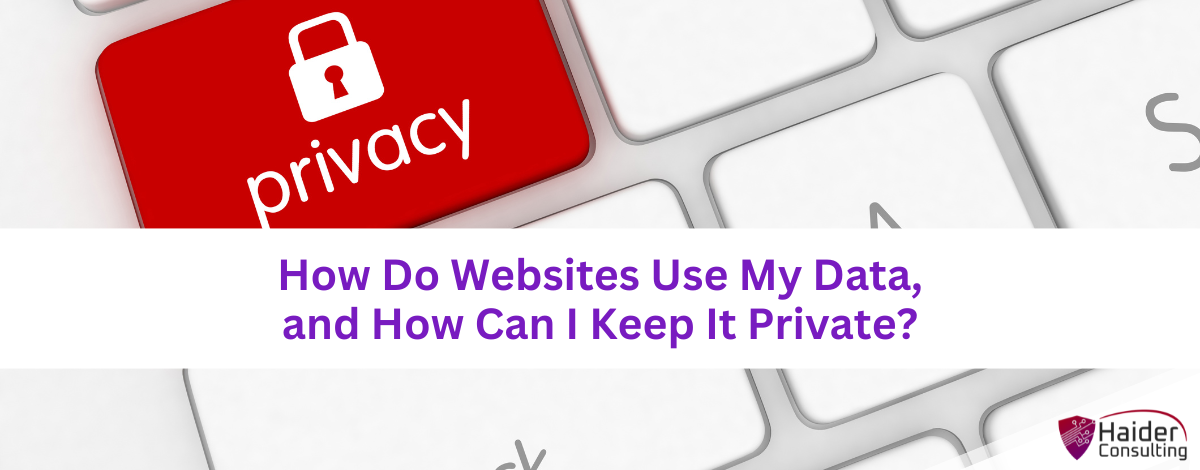Websites collect and use user data in many ways, often to improve how the site works, show personalized content, and display ads. This can include basic details like your browser type and IP address, as well as more sensitive info such as your name or credit card number.
It’s important for users to understand how this data is collected, used, and shared. In this article, we’ll explain how websites gather user data, the common ways it’s shared, and why protecting your privacy matters.
What Is Data Collection on Websites?
When you visit a website, it usually collects information about you. This process—called data collection—happens in different ways. One of the most common is through cookies, small files stored on your device that help websites remember you across visits. Sites also track what users do, such as clicking links, scrolling pages, or filling out forms. This data helps website owners make the site more useful and show more relevant content or ads.
Websites gather two main types of data: first-party and third-party. First-party data is collected directly from your activity on the site—like your purchase history or pages you visit. Third-party data comes from other sources, such as ad companies or partner websites, and might include details like your age group or interests.
In many cases, websites don’t just collect your information—they also share it. Social media platforms like Facebook or search engines like Google often place trackers on websites to learn more about how people browse online. This data is then used to deliver more targeted ads.
While data collection can make browsing more personal and useful, it also raises questions about security and privacy. People have a right to know what data is being shared and how it’s being used. That understanding helps build trust between users and websites.
Next, we’ll look at how websites share data and what it means for your privacy.
How Does Data Sharing Work?
Data sharing means giving access to the same information to more than one person, system, or app. It’s a common process used by businesses and organizations to improve teamwork and decision-making. This can be done using tools like File Transfer Protocol (FTP), Application Programming Interfaces (APIs), or cloud platforms. While data sharing helps people work together and learn more from the data, it also comes with privacy risks if not handled carefully.
Understanding Data Sharing Methods
There are different ways to share data, depending on what kind of data it is and who needs it. APIs are often used to let different systems send and receive data in real time. Cloud services, on the other hand, allow teams to store and access files from a shared location. Each method has its pros and cons—especially when it comes to protecting the data and keeping it private.
Challenges In Data Sharing
A big challenge with sharing data is making sure that sensitive information stays safe. To stop data from being seen or stolen by the wrong people, businesses need to use strong protections like encryption and strict access rules. It’s also important to follow privacy laws such as the General Data Protection Regulation (GDPR) or the California Consumer Privacy Act (CCPA), which require companies to be open about how they use personal data and get permission from users first.
Data sharing also brings up ethical issues. It’s important to use data only for the reasons it was collected and to make sure users have some control over how their data is used. That’s why companies need to have clear rules about who can access data, how it can be used, and keep records of all sharing activities.
In the next section, we’ll explore the best ways to handle and protect user data on websites.
How Should Websites Manage User Data?
Managing user data the right way is key to earning trust and following privacy laws. Websites should only collect the data they really need, which lowers the chance of a data breach and makes it easier to stay compliant. It’s also important to store that data safely—using tools like encryption—to keep it protected from hackers and leaks.
Best Practices for Data Management
- Be Clear and Ask Permission: Let users know exactly how their data is being used. Give them a choice to agree (opt-in) or not (opt-out). Also, allow them to see, change, or delete their personal data if they want to.
- Only Collect What’s Needed: Don’t ask for more information than necessary. Limiting the amount of data collected makes it easier to protect and follow privacy rules.
- Keep Data Secure: Use encryption to protect data while it’s stored and while it’s being sent. Perform regular security checks and keep your systems updated to fix any weak spots.
- Give Users Control: Offer easy ways for users to manage their data. Let them download their information, make changes, or delete it altogether if they choose.
By using these practices, websites can treat user data with care, reduce risks, and stay in line with data protection laws.
Next, we’ll take a closer look at why data privacy and legal compliance are so important.
Why Is Data Privacy Important?
Data privacy means people have control over their personal information. It’s a basic right that every business must respect. To protect that right, companies should put strong safeguards in place—like secure systems, clear rules, and regular training for employees. Technical tools such as encryption and access controls also help keep user data safe from leaks or misuse.
Laws like GDPR and CCPA require businesses to protect user data and come with serious fines if they don’t comply. That’s why it’s so important to have a full privacy plan in place. This plan should include getting clear permission from users, securing data with encryption, and being open about how their data is used.
Staying Compliant
Following data privacy laws isn’t a one-time task—it takes constant work. This includes keeping privacy policies up to date, running regular security checks, and keeping clear records of how user data is handled.
Building Trust with Transparency
Being open with users builds trust. Websites should explain, in simple language, what data is collected and how it’s shared. Users should also be able to easily update their settings or take back their consent at any time.
In the final section, we’ll look at how users can take control of their own privacy and protect their data online.
How Can Users Protect Their Data?
There are many ways users can protect their personal data online. One easy step is to use browsers and extensions that focus on privacy. These tools can block tracking cookies and scripts that follow your online activity. It’s also smart to be careful about what personal information you share on websites or social media. Always check and adjust your privacy settings on platforms you use often.
It’s important to know how websites collect and use your data. Reading privacy policies—especially on new or unfamiliar sites—can help you decide what you’re comfortable with and whether you want to continue using the service.
Tools For Data Protection
There are helpful tools that can make it easier to stay safe online. VPNs (Virtual Private Networks) hide your IP address and secure your internet traffic. Password managers store your login information and help you create strong, unique passwords for each account. Keeping your devices and software up to date is also key, as updates often fix security issues.
Educating Yourself
Learning about data privacy and how your information is used online is one of the best ways to protect yourself. The more you know, the better decisions you can make about what to click, what to share, and how to keep your data safe.
In the end, protecting personal information is a shared effort between users and websites. When both sides follow good privacy practices, the internet becomes a safer and more trustworthy place for everyone.
Take Action to Protect Your Data
If you’re worried about how your information is being used online, now is the time to act. Our team helps both individuals and businesses understand and manage data privacy and security. Whether you need help creating privacy policies or making your online activity more secure, we’re here to support you.
Reach out to us today to find out how we can help you protect your data and create a safer experience on the internet.
Book My 17-Minute Call





